Table of Contents
Update Channels for Microsoft 365
Current Channel – Provides users with the latest features as soon as Microsoft releases them.
Monthly Enterprise Channel – Provides users with new or updated features only once a month on a schedule.
Semi-Annual Enterprise Channel – For organizations that have a more controlled environment.
How to Change the Microsoft 365 Update Channel
The Current Channel is the default update channel for Microsoft 365 Apps for Enterprise (previously referred to as Office 365 ProPlus) and Microsoft Apps for Business (previously referred to as Office 365 Business).
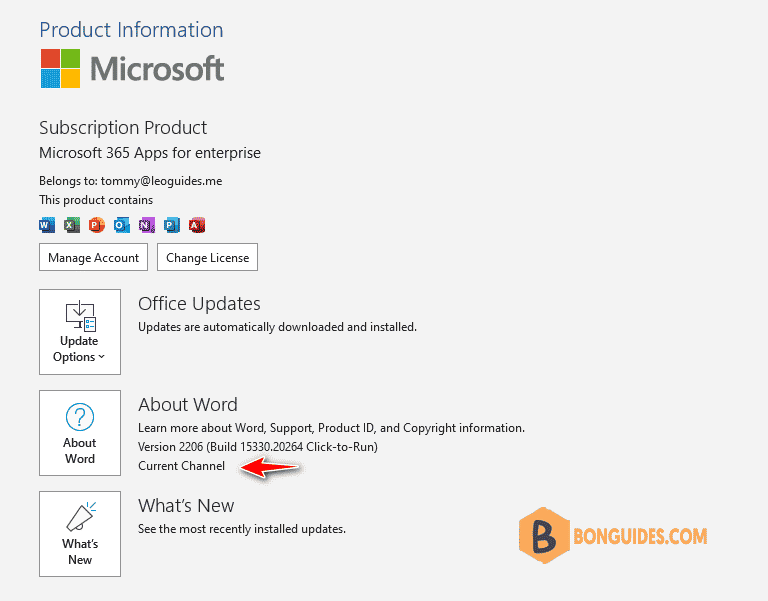
There are multiple ways to change the Update Channel:
- Change with Microsoft 365 Admin Center
- Change with Group Policy
- Change with the Office Deployment Tool (ODT)
- Change with Command Prompt or PowerShell
Change with Microsoft 365 Admin Center
1. Login into Microsoft 365 admin center using an administrative account.
2. Click on the Show all option to get more options.
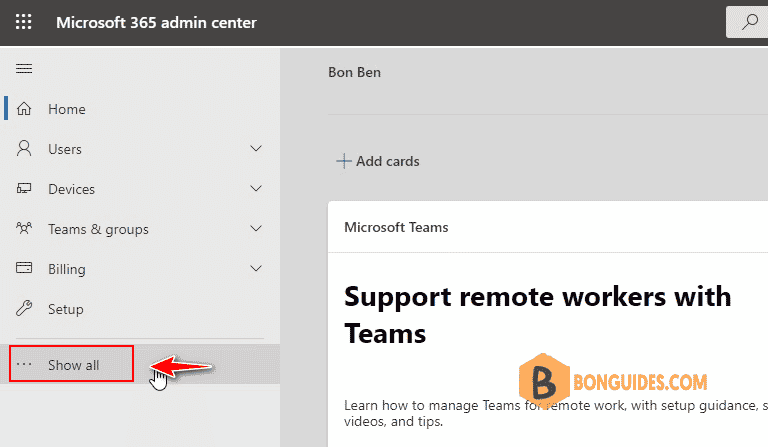
3. Expand the Settings option then select Organization settings.
4. Select the Services tab, scroll down then select Office installation options.
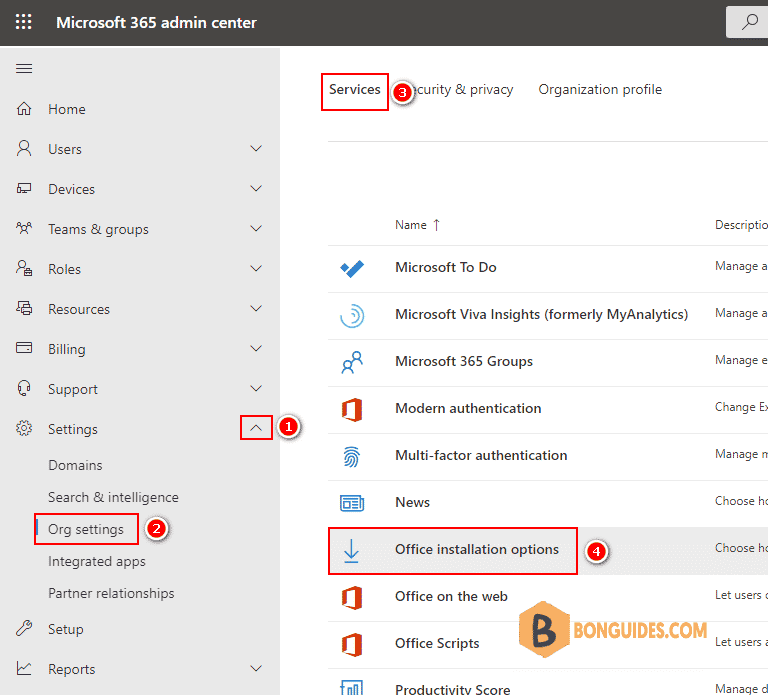
5. Choose one of the following Update Channels as you need. When users install Microsoft 365 apps from their account at https://office.com the update channel is preconfigured.
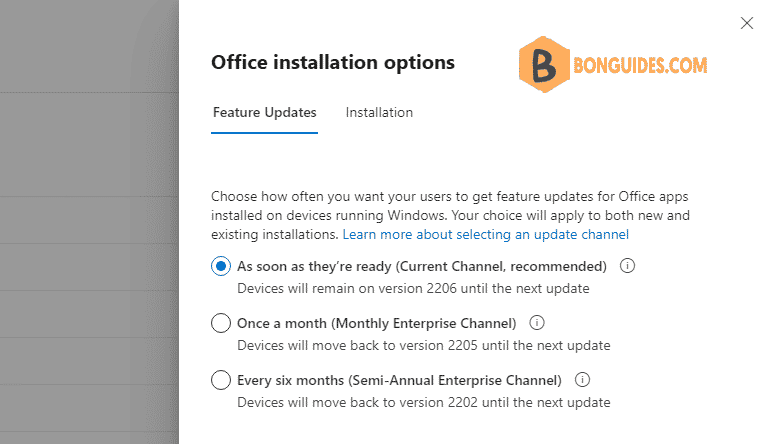
Change with Command Prompt or Windows PowerShell
1. Close all opening Office programs.
2. Right click on the Windows Start button then select Windows PowerShell Admin.
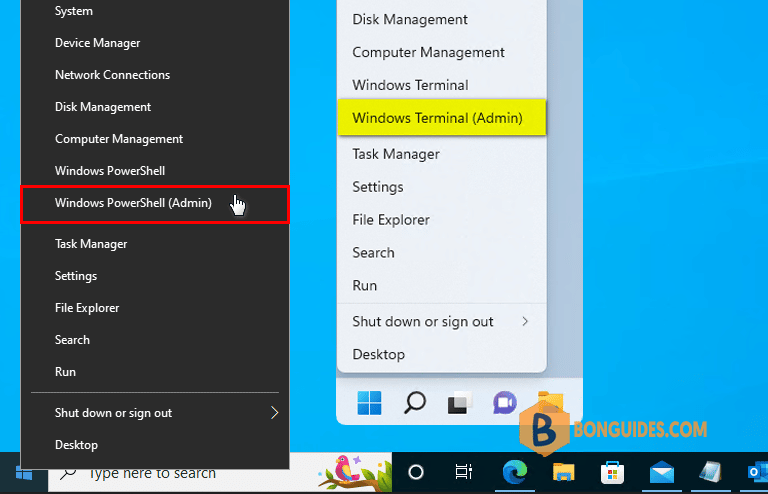
3. Navigate to the following location using cd command: cd “C:\Program Files\Common Files\Microsoft Shared\ClickToRun”
PS C:\WINDOWS\system32> cd "C:\Program Files\Common Files\Microsoft Shared\ClickToRun"
PS C:\Program Files\Common Files\Microsoft Shared\ClickToRun>4. Run the following command .\OfficeC2RClient.exe /changesetting Channel=MonthlyEnterprise
5. Run the following command .\OfficeC2RClient.exe /update user
PS C:\Windows\system32> cd "C:\Program Files\Common Files\Microsoft Shared\ClickToRun"
PS C:\Program Files\Common Files\Microsoft Shared\ClickToRun> .\OfficeC2RClient.exe /changesetting Channel=MonthlyEnterprise
PS C:\Program Files\Common Files\Microsoft Shared\ClickToRun> .\OfficeC2RClient.exe /update user
PS C:\Program Files\Common Files\Microsoft Shared\ClickToRun>6. You’ll see a window about updating Office. It may take a few minutes. Wait until it is complete.
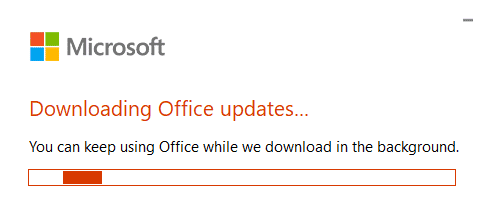
7. When the updates have been installed, let’s open any Office app to verify it works.
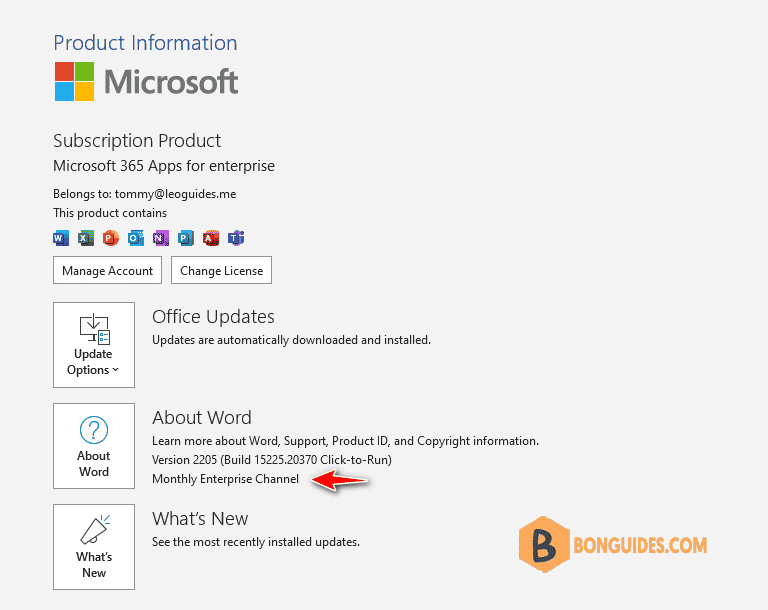
Change with the Office Deployment Tool (ODT)
1. Download the latest version of Office Deployment Tool.
2. Create a configuration file that specifies the new channel name.
Example
<Configuration>
<Updates Channel="MonthlyEnterprise" />
</Configuration>Allowed values
- Channel=”CurrentPreview”
- Channel=”Current”
- Channel=”MonthlyEnterprise”
- Channel=”SemiAnnualPreview”
- Channel=”SemiAnnual”
3. Deploy the configuration file using your standard processes.
4. After the Office Deployment Tool (ODT) has executed, the Office Automatic Update 2.0 task must run. The task will detect change and update channel. The device will not show the updated channel until a build of Office from the new channel is installed.
Change with Group Policy
1. Download the Administrative Template Files (ADMX/ADML) for Office Customization Tool for Microsoft 365 Apps for Enterprise, Office 2019 and Office 2016. Then open downloaded file to extract it to a folder on a domain controller.
2. Copy all files and folders in the sub folder named admx in the extracted folder.
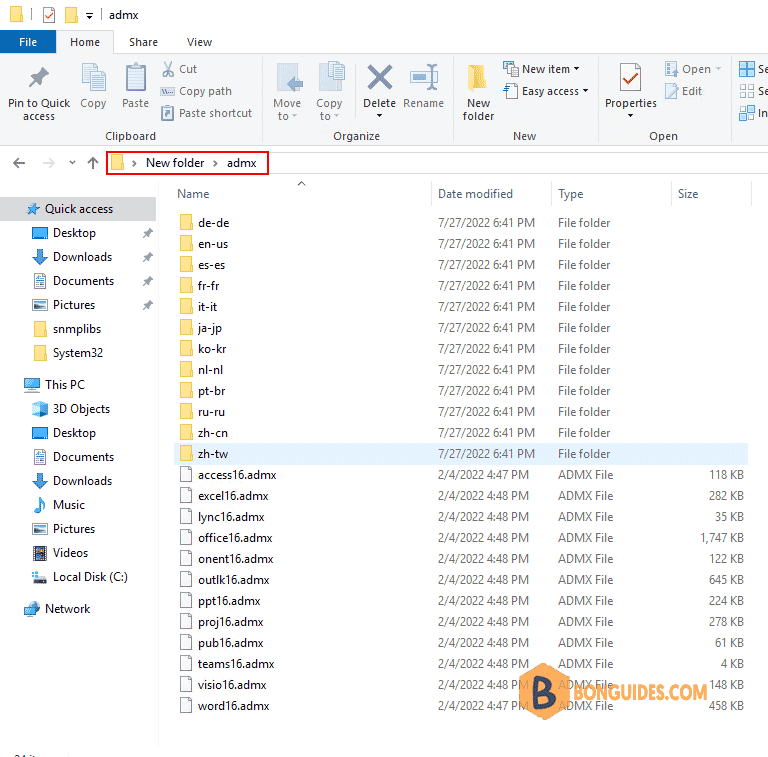
3. Paste copied stuff into PolicyDefinitations folder. You must create if the folder doesn’t exist.

4. In the Group Policy Management Tool, enable the Update Channel policy setting and choose the new Channel from the drop-down list. You can create a new Policy Object to configure Update channel for Microsoft Office.
The policy setting can be located under: Computer Configuration\Policies\Administrative Templates\Microsoft Office 2016 (Machine)\Updates.
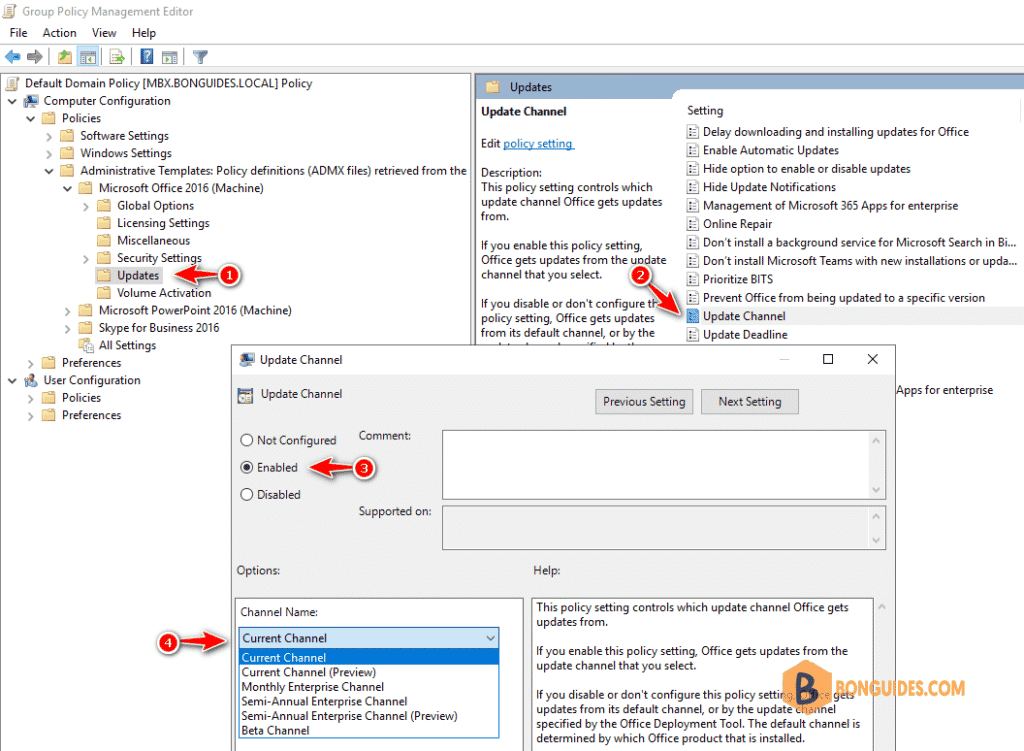
5. The Group Policy refreshes in the background every 90 minutes. To refresh the policy assignment immediately, you can use the gpupdate command. For more information, visit Microsoft’s page on gpupdate.





